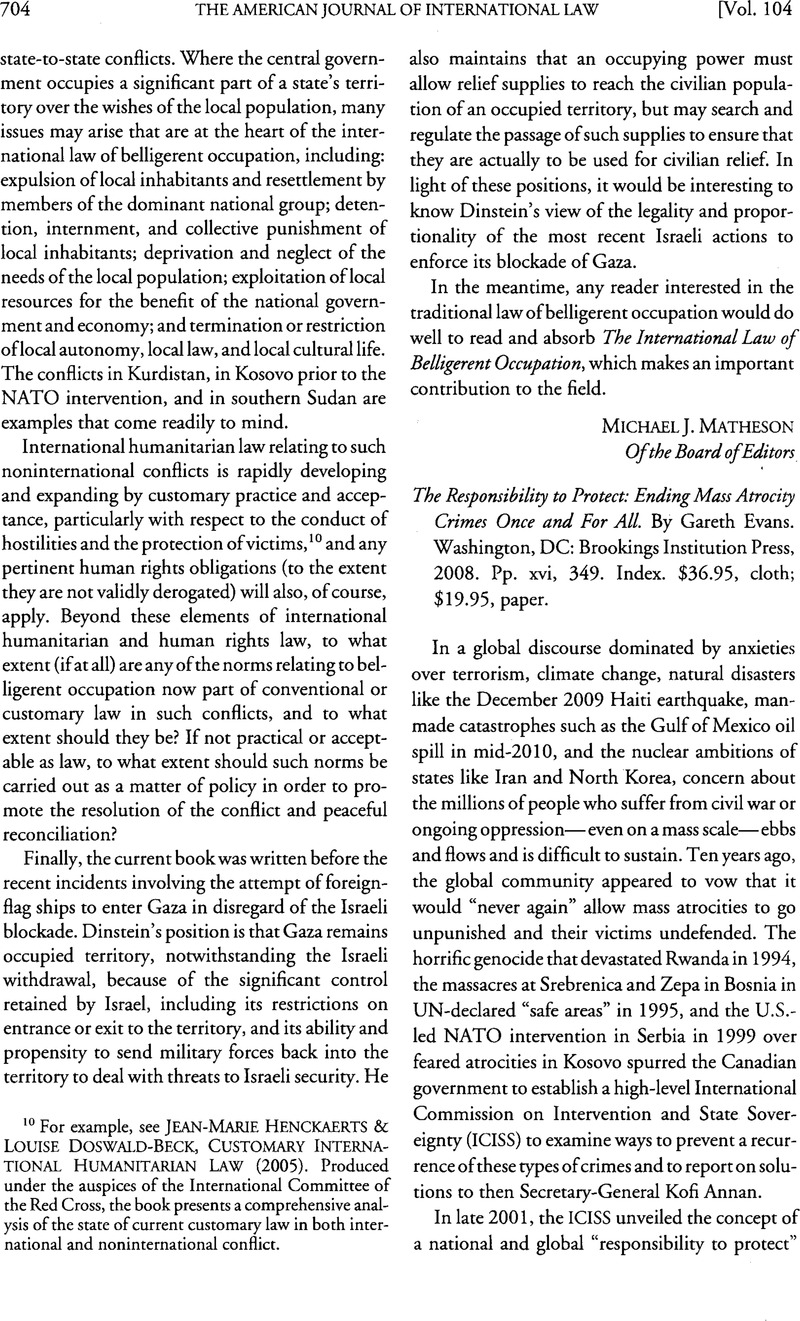No CrossRef data available.
Published online by Cambridge University Press: 27 February 2017

1 International Commission on Intervention and State Sovereignty, The Responsibility to Protect (2001)Google Scholar, available at http://www.iciss.ca/report-en.asp.
2 2005 World Summit Outcome, GA Res. 60/1, paras. 138-39 (Sept. 16, 2005) [hereinafter Outcome Resolution].
3 See, e.g., Bellamy, Alex J., Responsibility to Protect (2009)Google Scholar; Lepard, Brian D., Rethinking Humanitarian Intervention: A Fresh Legal Approach Based on Fundamental ethical Principles in International Law and World Religions (2002)Google Scholar; James, Pattison, Humanitarian Intervention and the Responsibility to Protect: Who Should Intervene? (2010)Google Scholar.
4 A More Secure World: Our Shared Responsibility: Report of the High-level Panel on Threats, Challenges and Change, para. 203, UN Doc. A/59/565 (2004).
5 In Larger Freedom: Towards Development, Security and Human Rights for All, Report of the Secretary- General, para. 135 & annex III(7)(b), UN Doc. A/59/2005 (2005), available at http://www2.ohchr.org/english/bodies/hrcouncil/docs/gaA.59.2005_En.pdf.
6 Outcome Resolution, supra note 2, para. 138.
7 Id., para. 139.
8 See, e.g., Lepard, supra note 3, at 376-83.
9 On the concept of persuasive obligations, see Lepard, Brian D., Customary International Law: A New Theory with Practical Applications 54–57 (2010)Google Scholar.